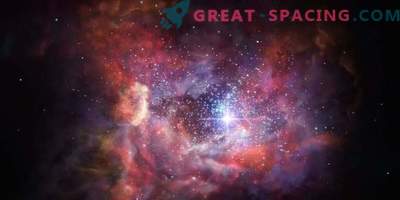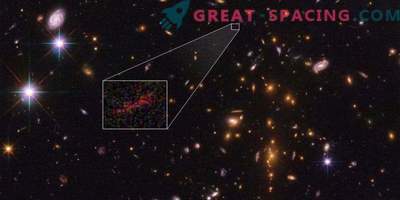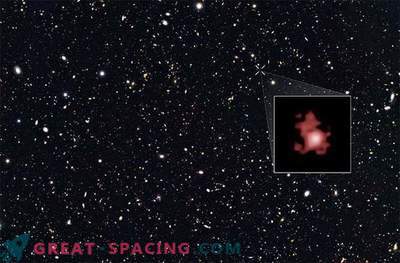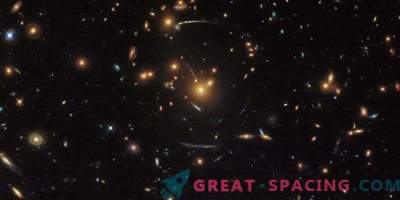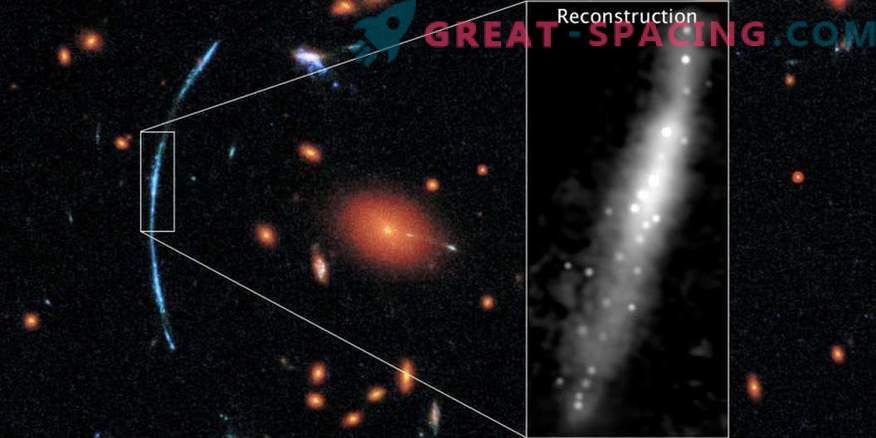
The Hubble telescope captures a spotted blue arc against a background of red galaxies. These are three separate frames of one background galaxy. It was gravitationally lensed, and the light was enlarged and distorted by intermediate galactic cluster
When we talk about looking into the distant Universe, then among the technologies the Hubble Space Telescope has no equal. However, he is not omnipotent. To get more accurate details, you need to use cosmic alignment for gravitational lensing.
Thus, Hubble managed to get a picture 10 times clearer than his technical abilities allow. In the frame, a galactic disk, rotated with an edge with parts of a starry birth, was imprinted.
The found object is located so far that we literally look 11 billion years ago into the past. For you to understand, this is only 2.7 billion years after the start of everything. The gravity between the large-scale galactic cluster and our planet affects the galactic light, increasing the arc almost 30 times. Scientists had to register a new program code to fix it.
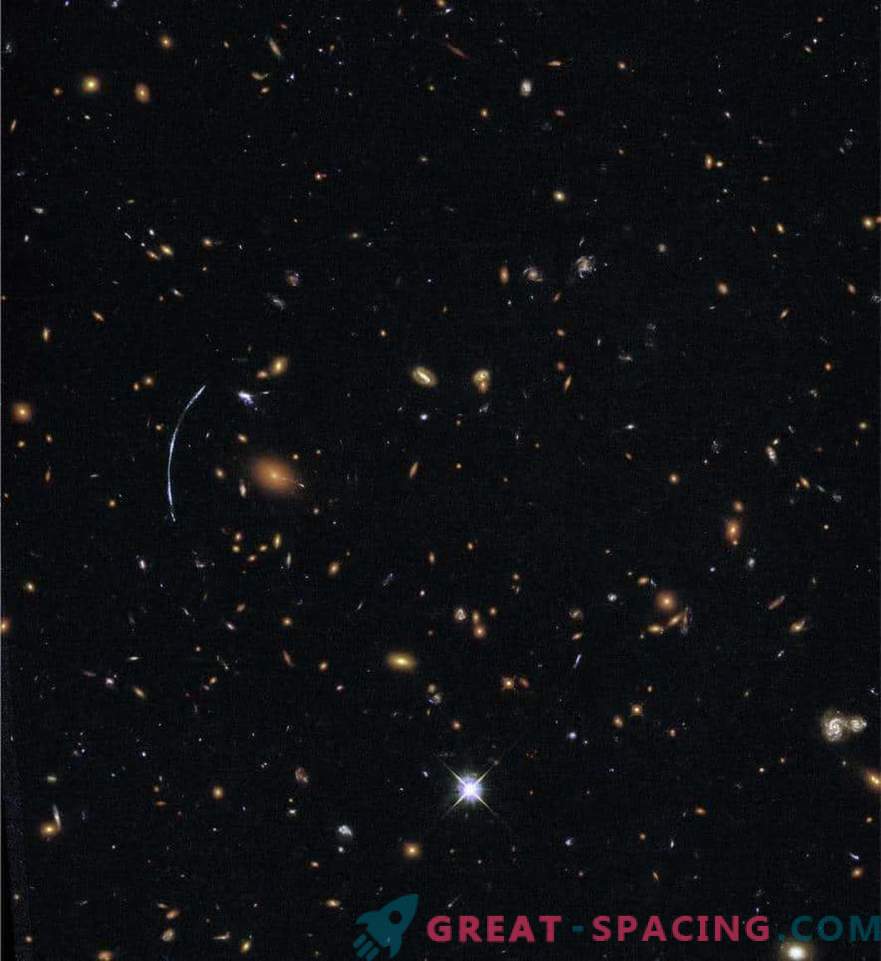
The Galactic Cluster SDSS J1110 + 6459, located 6 billion light-years, contains hundreds of galaxies. The blue arc on the left is represented by three separate frames of the more distant galaxy SGAS J111020.0 + 645950.8. It was possible to display it with the help of gravitational lensing.
Thanks to the reconstruction, it turned out to find about 20 star clusters stretching for 300 light-years. This does not agree with the theory, which believed that such areas in the early space should take more than 3,000 light years.
The researchers are eagerly awaiting the launch of the James Webb telescope, which promises to surpass the power of Hubble and show the ancient galaxies with red stars.



